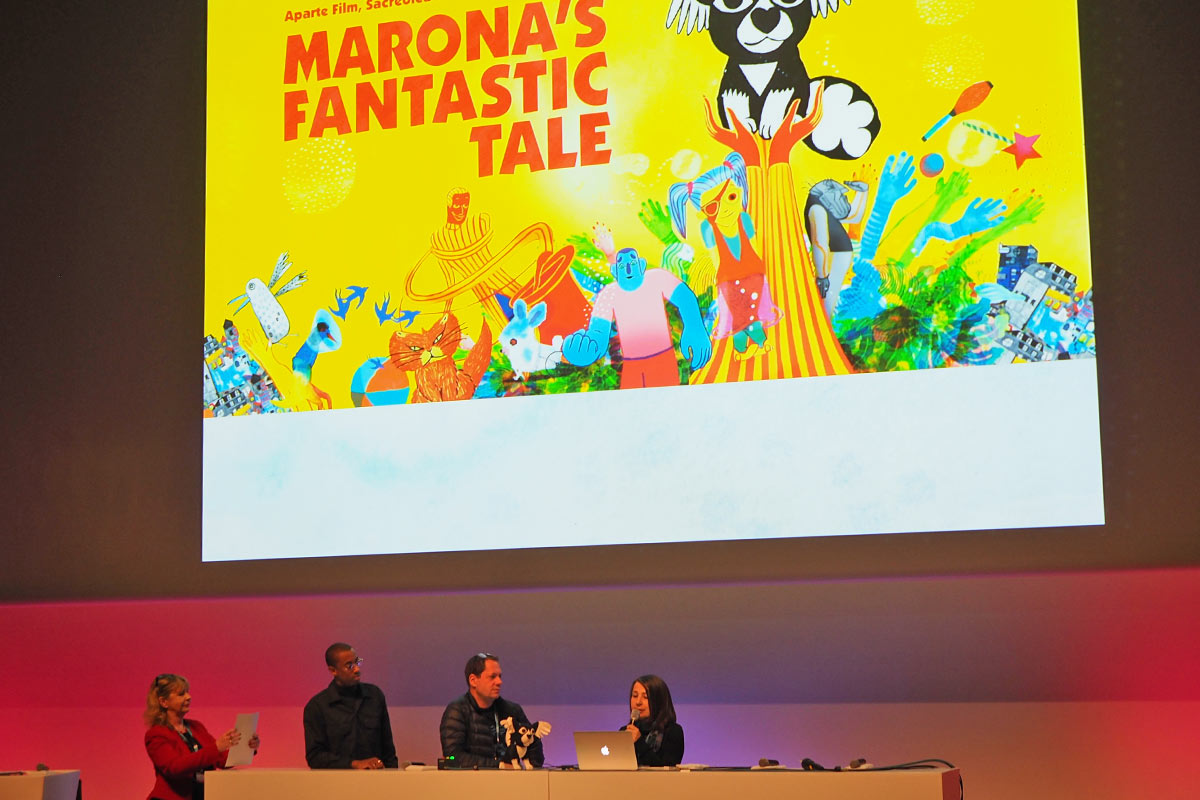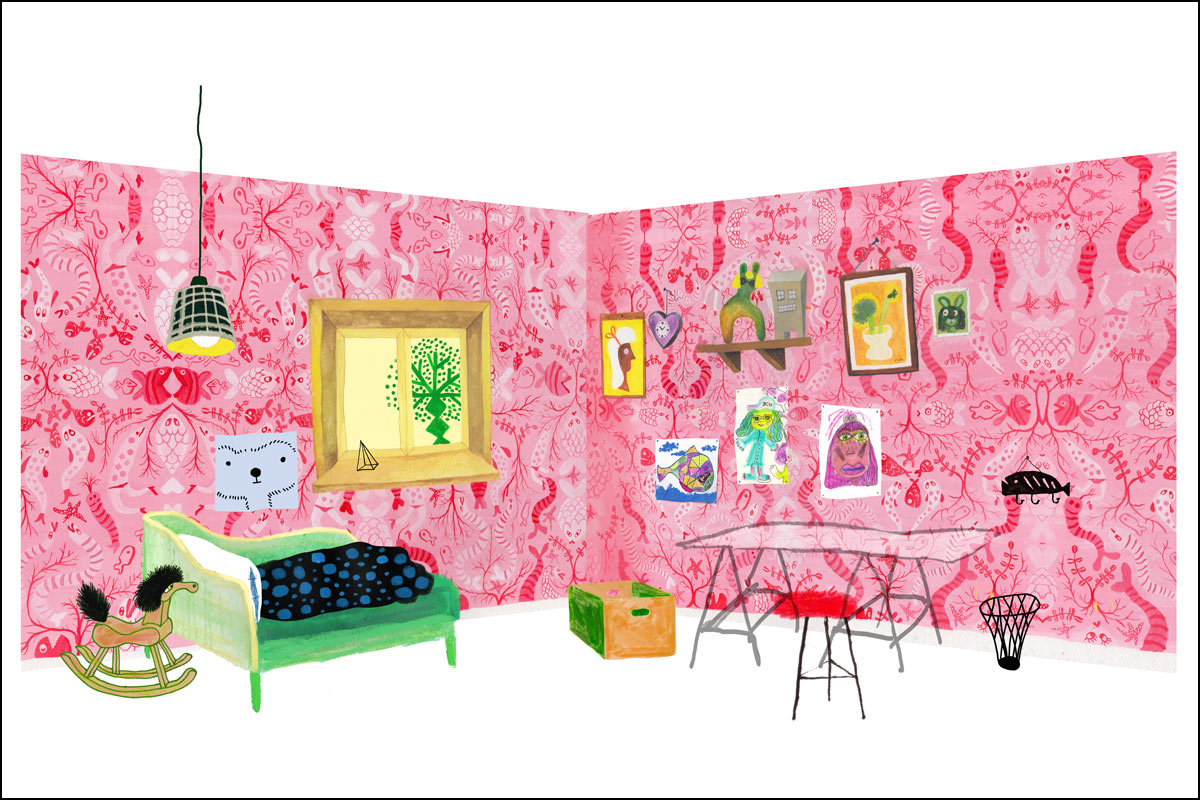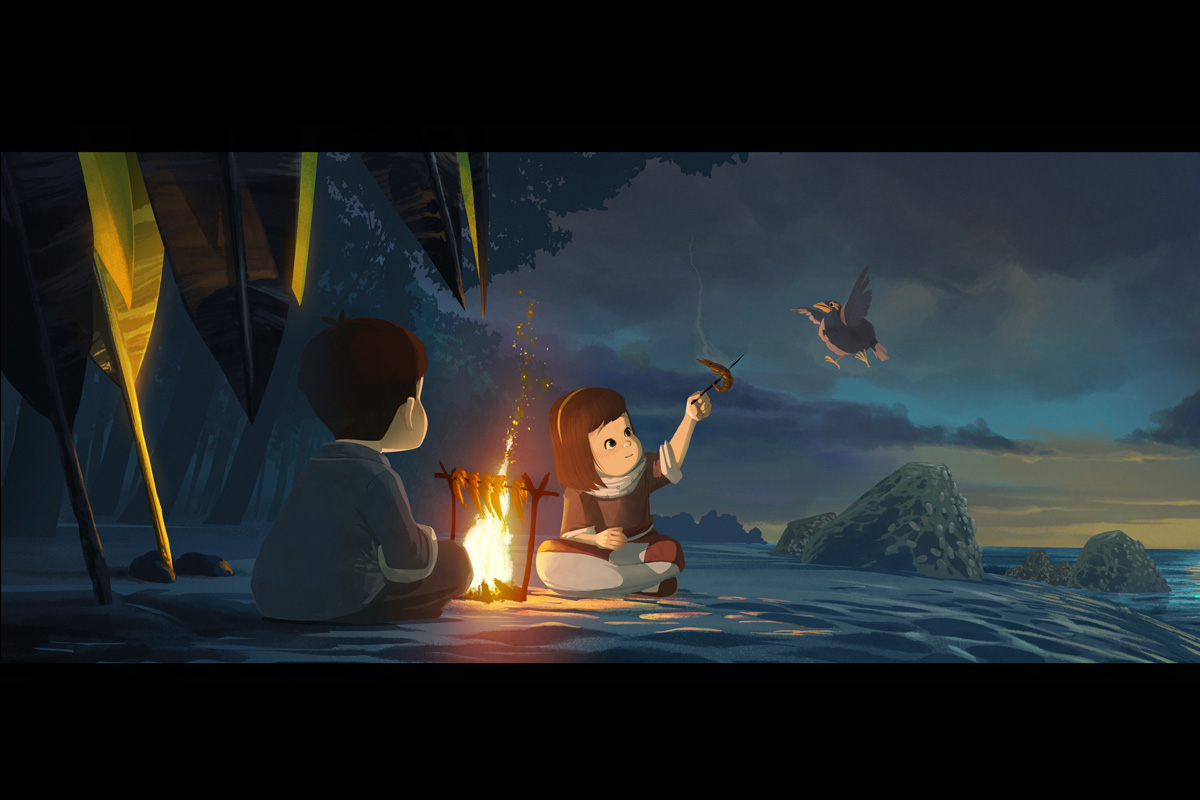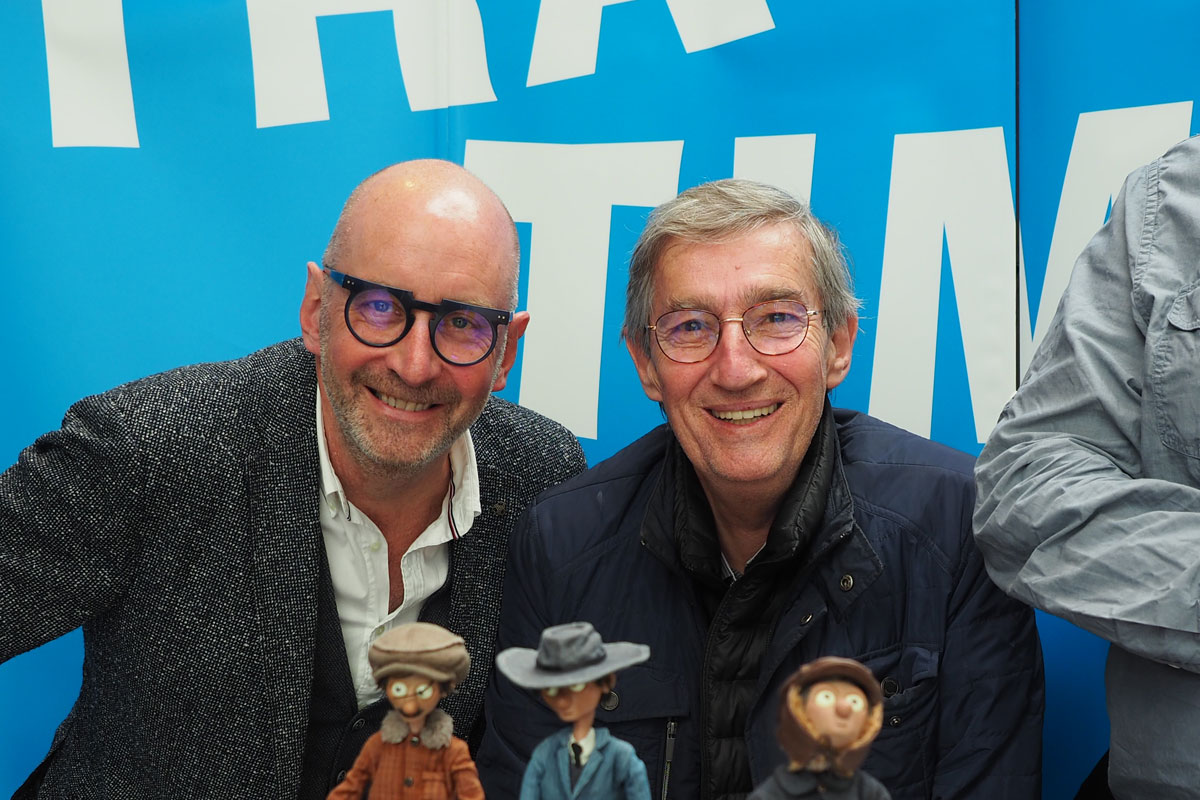Marona’s Fantastic Tale
(Status: completed)
[row][column size='1/4']

[/column]
[column size='3/4']
Synopsis
The story of this movie is the story of a little she-dog, Marona, a half-breed brown Labrador. Her life leaves deep traces into the human lives she intersects with. Marona is given several names by each of her “masters”, and this is the only way her existence is reflected into the world of humans, while she brings only love into her owners’ lives.
Victim of an accident, a small female dog remembers her different masters she has unconditionally loved. With her unfailing empathy, Marona has rought lightness and innocence in each of the homes she has lived in.
[/column]
[/row] [row]
[column size='1/2']
Marona’s Fantastic Tale
Director: Anca Damian
Author: Anghel Damian
Producer: Anca Damian (Aparte Film, Romania)
Co-Producers: Ron Dyens (Sacrebleu Productions, France) / Tomas Layers (Minds Meet, Belgium)
Target audience: Family
Technique: 2D digital / 3D digital / Drawing / Painting
[/column]
[column size='1/2']

[/column]
[/row]
The beautiful and impressive animated feature Marona’s Fantastic Tale made a return to Cartoon Movie 2019 as a part of the sneak preview progams. It is a film that invites you to the journey of Marona, a small dog, to reflect her life, a very unique and fantastical visual world. Marona’s touching stories with her “masters” are expressed delicately with the movement of characters, composition, and camera work of each scene, totally free from the rules of our real world.
At this year’s Cartoon Movie, we could interview Anca Damian, the author, director and producer of the film, once again. For your conveniance, we would like to put all her words we heard at Cartoon Movie 2018 and 2019 together below for you to read them all at once (The first three questions are from the article we published last year for “Issue 11: Cartoon Movie 2018“).
Interview with Anca Damian
Hideki Nagaishi (HN): Where did the initial idea of the story come from?
Anca Damian: The story was inspired by a true story: I saved a female dog, who actually is now named Marona, in 2014 in the streets of Bucharest, Romania. I tried to find someone who would foster her, as I have a male dog and she was in that period where she could get pregnant. She is a very special dog and changed every family where she was kept for some weeks. I was doing my film The Magic Mountain (2015) at that time, so I was very busy and needed to travel a lot, as well as take care of my dog. But I couldn’t disappoint her, so I really took care of her until she was adopted (and even afterwards). This experience is the source of the script for Marona’s Fantastic Tale. The script was written with the huge help of my son, Anghel Damian.
HN: How did you develop the whole story with many interesting characters and very original artistic visuals?
Anca Damian: The ingredients for my story, I believe, are emotion and humor. The animators of our project told me, after they got to know me, that I always break the drama with a joke, such as with life, and is paradoxical for me.
Regarding to the visuals, I approached Brecht Evens, who defined the characters with his strong visual style. Brecht introduced me to Gina Thorstensen and Sarah Mazzetti, two brilliant illustrators, who are working on the backgrounds of the film now. With the exception of Gina, who has worked as a visual artist for music clips, Brecht and Sarah did not have any experience working on animation. So, they are bringing a fresh visual approach to this film with their fantastic individual talent.
I always work with a visual concept and references, but while collaborating with true and big artists, I always receive more from their touch and… That can’t be explained in words. But it is just brilliant.
HN: Could you please let me know how are you developing the very unique actions of characters, screen compositions and camera actions? They are really fantastic.
Anca Damian: My way of working is based on having small animation teams, and I try to involve artistically each animator. I dedicate a particular character to each one and develop the character with them. We discuss with references to push each character further, to make them stand on their own. We talk to each other for each shot in all stages of the animation. I give feedback to each animator and I get input from them. I am grateful for their artistic involvement, and then wonderful energy starts to develop between us. These make the project come alive.
To start with, the animator Dan Panaitescu is in charge of one of the main characters, Manole the acrobat. He is a brilliant animator, very creative and productive. I deeply appreciate him as an animator and as a person. The red lines in the visual design concept of Manole by Brecht were the energy of the character and we needed to define how he moves and how he is. When I found the serpent acted by Bob Fosse in The Little Prince (1974), this reference opened the door to give Manole this fascinating character and life in the animation.
The animators for the three ages of Marona (each time she is with three different masters: Manole, Istvan and Solange) are Claudia Ilea, Marjorie Caup and Mathieu Labaye. Hefang Wei and Paul William are the animators for Istvan. Nicolas Rolland animates Istvan’s mother. Chloe Roux animates Solange. The animator for Solange’s mother is Stephanie Cadoret. Jerome Daviau is responsible for the Grand Father. And the team for the sets are Sergiu Negulici, Alizee Cholat, Jimmy Audoin, Michael and Frederic Palmers. It is a team spread across Europe: Romania, France, Belgium, Norway and Italy. The film will gather each individual contribution in a whole that I love to orchestrate. A lot of work, but very rewarding and fun.
[row][column size='1/2']
[/column]
[column size='1/2']
[/column]
[/row]
HN: What kind of experience or message do you want to deliver the most to the audience through the film?
Anca Damian: The very heart of this film is a love/empathy message. Living life in the present, and enjoying the small things, the connection to the other is the dog’s “happiness lesson” for humans. The song at the end encapsulates this message.
“Happiness is a small thing
Almost nothing,
A saucer of milk
A big wet tongue
A nap
A place to bury a bone
A hand
A smile” – Elena Vladareanu
Of course, doing this film I aimed to offer the audience a unique experience, at the visual level – the beauty of arts & crafts and the concept of subjective space, and at the auditive level – the music is in itself a piece of art.
I alternate humor with emotions, trying to make all the characters lovable and complex. I do hope the film will be entertaining and will open the hearts of the audience.
HN: The music in the film is synced with the animation very well, making one scene more elegant, another scene more mysterious, and so on. I would like to hear about your journey in developing the music for the film.
Anca Damian: The work with the composer Pablo Pico started at the beginning of the production. The musical themes were composed before we started the animation. In my animated films I always enhance the music, I think that animation is the place of meeting the visual arts with the music, so I choose carefully the composers and I give them a lot of conceptual input on the film.
While we were almost ready with the animation, Pablo composed the final music. The experience of working with Pablo Pico was really unique, as he is also a very intuitive and creative, being also very organised at the same time.
The music recording took place in an attic in the Strasbourg region, 40km from the train station. Each musician only came for one to two days, so we were isolated and we could really develop a connection with each one. We could improvise during the music recording, I was staying near the musicians and communicating directly with them all the time.
I had the chance of working with Pablo and a wonderful team of musicians.
HN: What do you think are the highlights of the film?
Anca Damian: I am very grateful to all the artists and teams that let themselves be driven by my vision and also brought their contributions to make Marona’s Fantastic Tale unique. I think this film is very special, as it explores, in a very inventive and unexpected way, the language of animation. From the visual point of view, the artwork of Brecht Evens, Gina Thorstensen and Sarah Mazetti developed a unique universe. It is addressing to everyone: all ages will receive their level of reading and entertainment from the film.
[row][column size='1/2']
[/column]
[column size='1/2']
[/column]
[/row]









